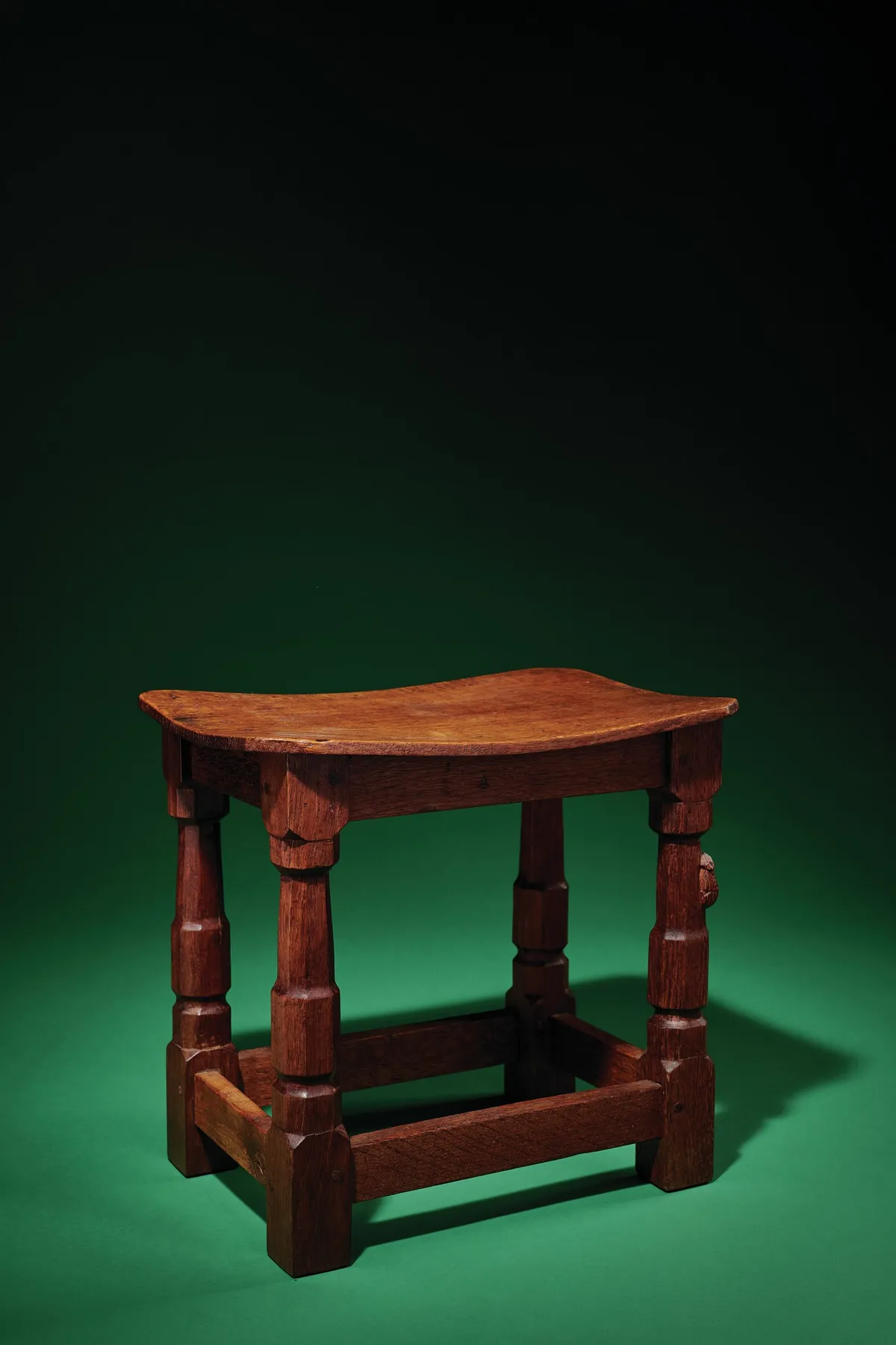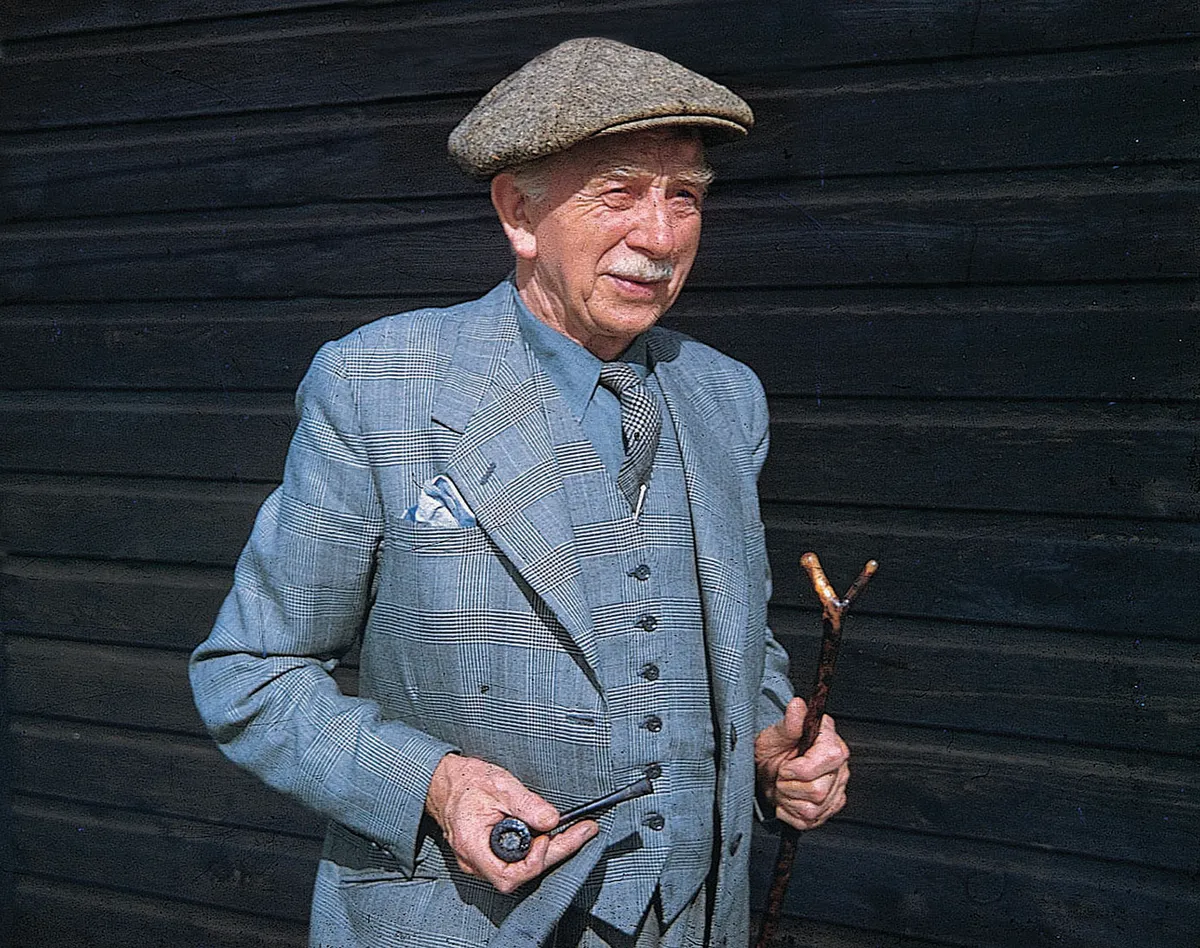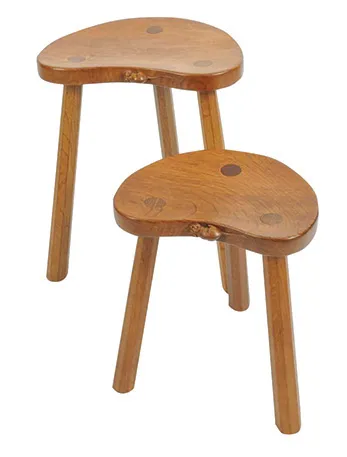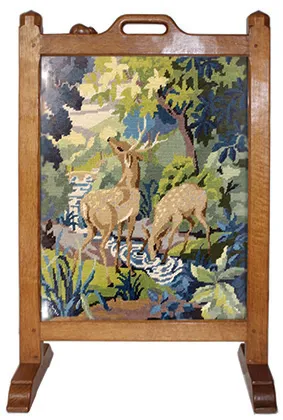Famous for the little signature mouse carved into every piece of his work – from altars to ashtrays – Robert ‘Mousey’ Thompson’s English oak creations exude the simple elegance and charm of the Arts & Crafts era. Today, highly prized for its qualityof craftsmanship, Mouseman furniture is more popular than ever before, as buyers are drawn to the functional beauty and reassuring solidity of the handcrafted designs produced in Thompson’s Yorkshire workshop. The magic of Mouseman looks set to enchant us for generations to come...

Want to learn more about the history of art but not sure where to start? We've made a list of the best art history and appreciation courses and lectures available online.
Who created Mouseman funiture?
Robert Thompson began making furniture during the Arts & Crafts era (1880s-1930s), inspired by the English styles of the 17th century. He rejected modern machinery in favour of ancient tools and techniques.
The idea for the mouse carvings came about when Thompson had a commission to repair a church and was carving a huge cornice for a screen. He was chatting to his apprentices and one of them commented that they were ‘as poor as church mice’. While they were eating lunch, Thompson decided to carve a mouse onto the screen and that sowed the seed for using it as a trademark for his future wares.
Antiques dealer Holly Johnson has been buying and selling Mouseman items for the past 12 years. ‘A lot of the pieces are made using a medieval tool called an ‘adze’ – where they cut into the wood against the grain at an angle and it creates a scalloped pattern that looks super-shiny when it’s waxed,’ she describes. ‘Mouseman pieces are really useable. They will last for atleast four or five generations because they are so well made.’

Who was Robert Thompson?
Born and raised in Kilburn, a pretty village in the Yorkshire Dales, Robert Thompson (1876-1955) was the son of the village’s carpenter and stonemason. He taught himself to use traditional tools and, in 1919, he got his first big commission from Ampleforth College asking him to make Ampleforth Abbey’s furniture. He then worked on the college library, which he furnished from 1947 to 1949 and, according to his grandson, Ian Thompson-Cartwright, always referred to it as ‘my room’.
His workshop flourished until his death in 1955 and at one point he employed around 30 local craftsmen to help him with commissions. Their work was varied – from intricate carvings for ecclesiastical interiors to fireplaces and cheeseboards – but every oak creation included the trademark mouse. The family firm is still trading today as Robert Thompson’s Craftsmen Ltd.
Many of his co-workers – known as the ‘critters’ – went on to open their own workshops and used their own carved signatures, such as Alan ‘Acornman’ Grainger, Don ‘Foxman’ Craven, Peter ‘Rabbitman’ Heap and Thomas ‘Gnomeman’ Whittaker.
5 iconic Mouseman designs





How to buy antique Mouseman furniture
Antiques dealer Holly Johnsonon how to buy an original piece...
In the film Craftsman of Kilburn (1948) about Robert Thompson and his team, filmmakers Betty and Cyril Ramsden comment: ‘Here, skill and oak blend, producing the antiques of tomorrow.’ How right they were. The record price for a Mouseman piece is $70,000 (£40,460) for a cupboard, c1923, sold at Sotheby’s in New York.
‘Prices start at around £120 for an ashtray,’ says Holly. ‘In contrast, an early desk or sideboard could be as much as £33,000.’
‘Over the last four years, the market’s really risen,’ continues Holly. ‘Mouseman always holds its money. It’s all so beautifully made and the quality is so high. The oak was seasoned for five to eight years before it was even touched.’
Holly and husband Ben started out buying 1930s and 1940s examples. ‘We could find wonderful early pieces like dining sets fairly easily in the beginning, but it’s much harder now as there are more collectors around,’ she says. ‘Nowadays, we deal in the later pieces too, from the 1950sand 1960s.’
Holly has sold pieces to famousnames such as Woody Allen and Marco Pierre White, who has furnished his hotel, The Rudloe Arms, with beautiful Mouseman furniture. ‘While today, many collectors are wealthy clients or “kings of industry”, when the furniture was first made, it was often sold to local farmers, who used it for bartering.’
If the mouse is stuck on rather than carved, it’s a fake. ‘As prices go up, copies could become a bit more of an issue,’ says Holly. ‘If the mouse is on the board rather than the handle, it means it’s 1940s or earlier,’ she continues. ‘There are lots of other ways of dating pieces, but you have to really know Mouseman furniture in order to get a feel for it.’
On 1930s pieces, the mouse has quite a narrow neck, but the ears were prone to being knocked off, so later designs feature a slightly chubbier mouse with a broader neck and flatter ears. Some collectors are only interested in pre-1955 pieces that were made under the tutelage of Thompson, but later pieces are also highly sought after now.
